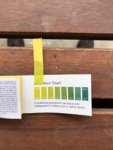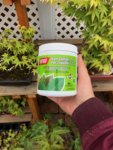D
Deleted member 21616
Guest
The leaves on my kashima maples (and only my kashima maples) are chlorotic. It was recommended that I spray the trees with epsom salt, by diluting it in water.
This is the method i want to apply
simple question -- does anybody know what concentration I should be using?
The person who diagnosed the issue and recommended the treatment could not recall the concentration off the top of his head.
Thank you,
Derek

@0soyoung @AlainK @markyscott @just.wing.it maybe?
This is the method i want to apply
simple question -- does anybody know what concentration I should be using?
The person who diagnosed the issue and recommended the treatment could not recall the concentration off the top of his head.
Thank you,
Derek

@0soyoung @AlainK @markyscott @just.wing.it maybe?
Last edited by a moderator:


